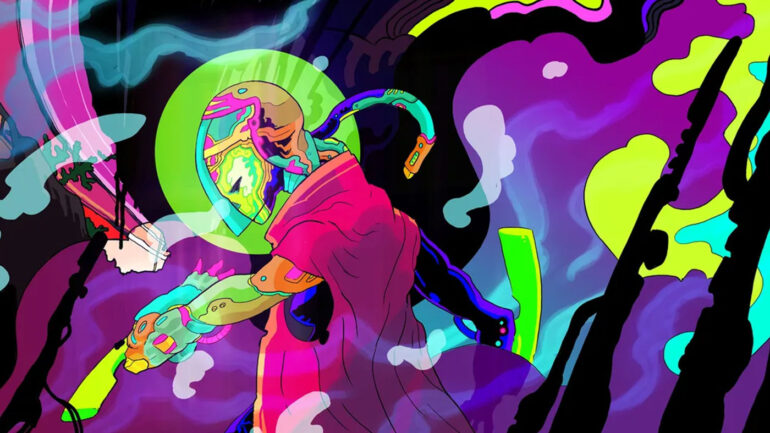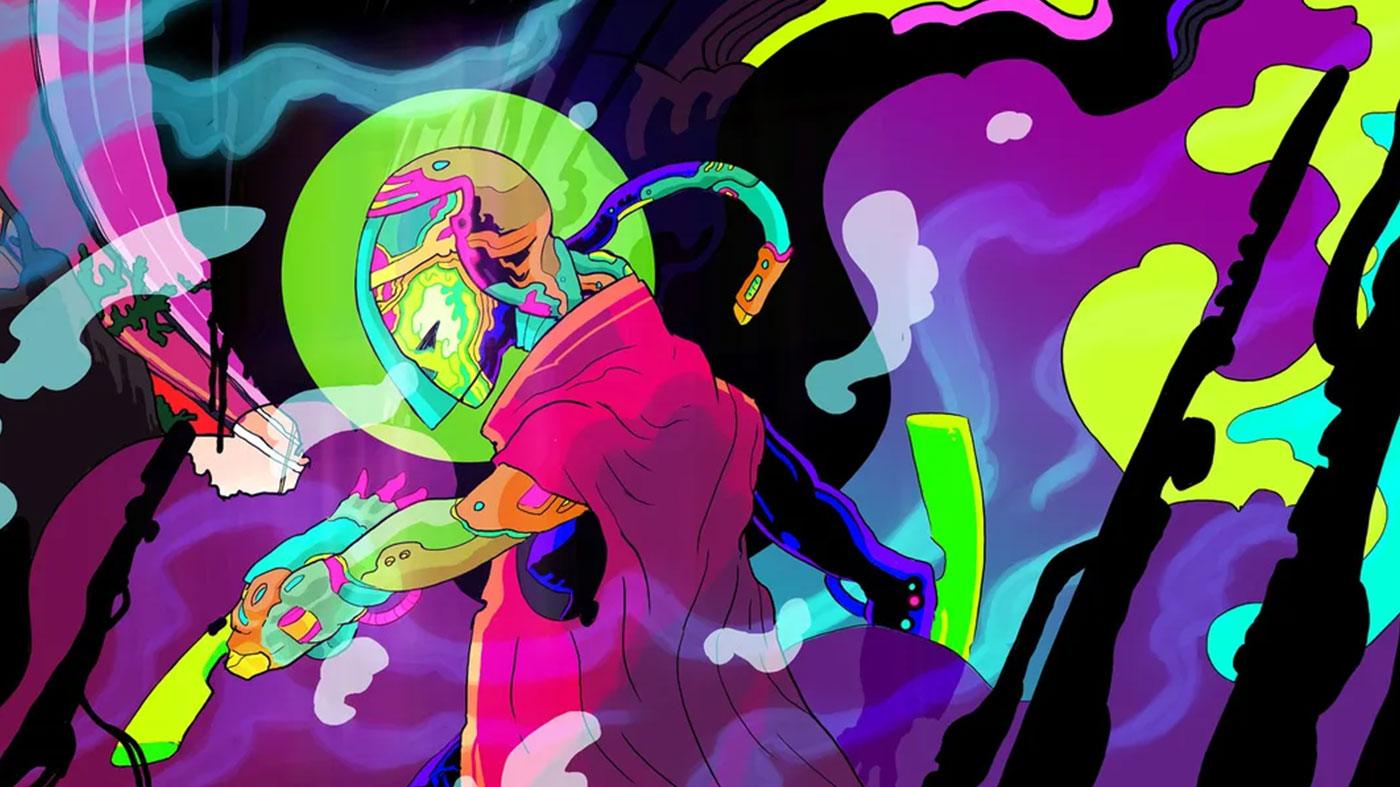Right on the heels of the Persian Prince’s comeback tour, Ultros is undeniably another in a string of releases that are delivering the metroidvania genre back into the limelight. Although El Huervo’s distinct art is more than enough to capture a player’s attention, the game’s ability to hook them in with its creative, roguelike sensibilities is unparalleled.
Adrift at the edge of a black hole and set aboard the Sarcophagus, a pulsing, living mess of organic matter, you carve out a path within the vessel, leaving behind a beautiful network of scandent stems that persist even as time resets with each loop. The ship itself serves as a space-uterus for an ancient being called Ultros, whose rebirth threatens the fabric of everything, but it’s shrouded inside a mystery that unfolds piecemeal as you meet the ship’s inhabitants, hostile and friendly, alike.
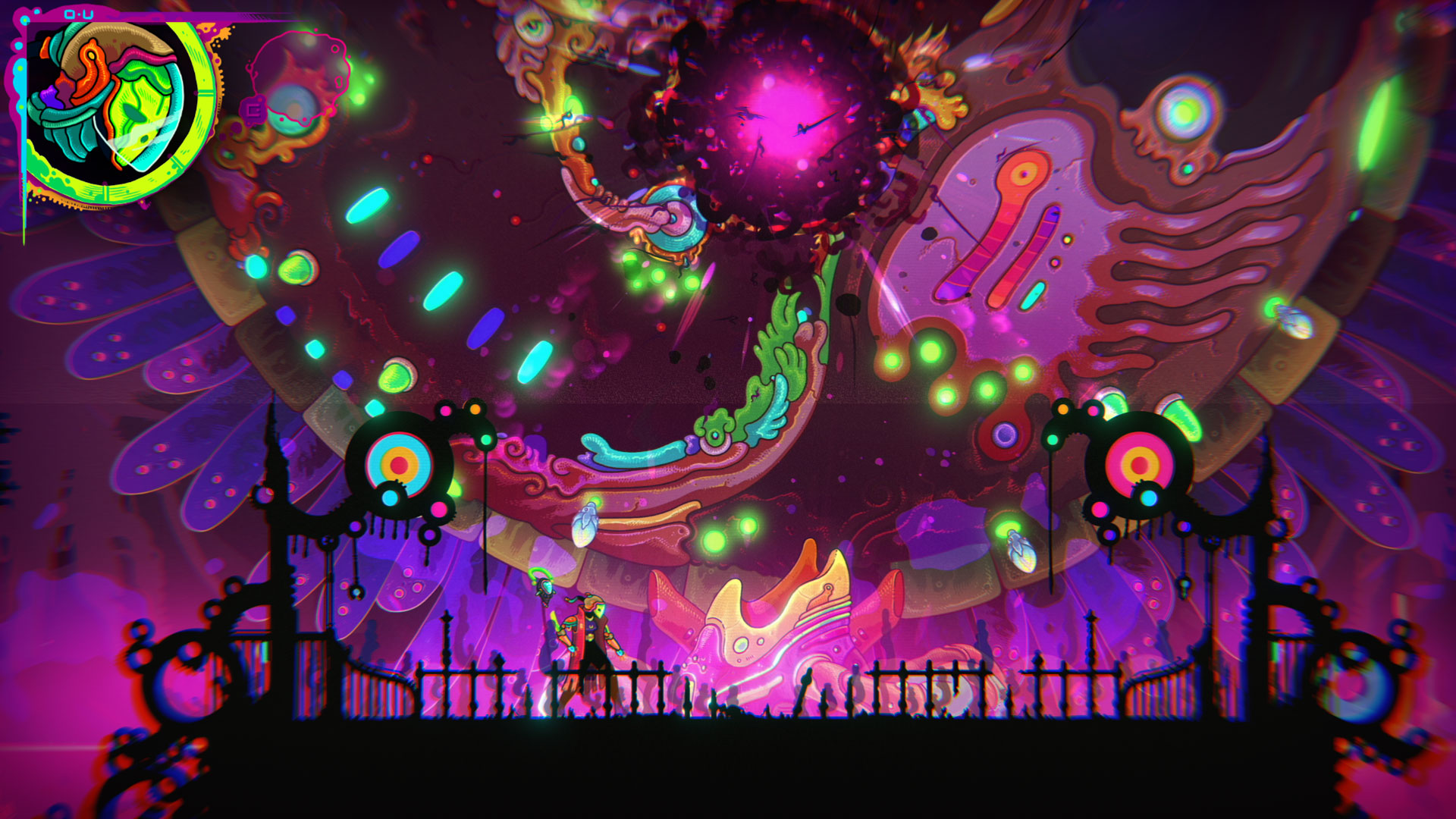
What I enjoy most about Ultros’ narrative is how it obfuscates the truth of things, wrapping it up in layers of deep lore that you’ll need to peel back throughout the first fifteen hours in hopes of understanding your role in everything. It’s riveting sci-fi and even after rolling credits on the first ending, I find myself returning to rediscover more deep-planted secrets.
Along with it being a metroidvania, which brings with it all of the things you’d expect, Ultros has an intimate close-quarters brand of combat that reminds me somewhat of Hollow Knight. While it feels disappointingly one-note for the first hour or two, the combat does begin to open up as you encounter more strategic enemies and explore more branches of your skill tree. It integrates systems that reward precision and offensive variety as the entrails of fallen fodder serve as fuel for both your upgrade tree and as compost for the world’s fertile soil.
And it’s in that fertile soil that you can also plant one of several seeds that can grow into trees, vines, bushes, and so forth. Although they’re not the only means of aiding traversal in Ultros, how these seedlings grow is a large part of the environmental puzzle craft, both in terms of opening up once-locked paths and connecting all things to the ship’s living network which builds towards the true endgame.
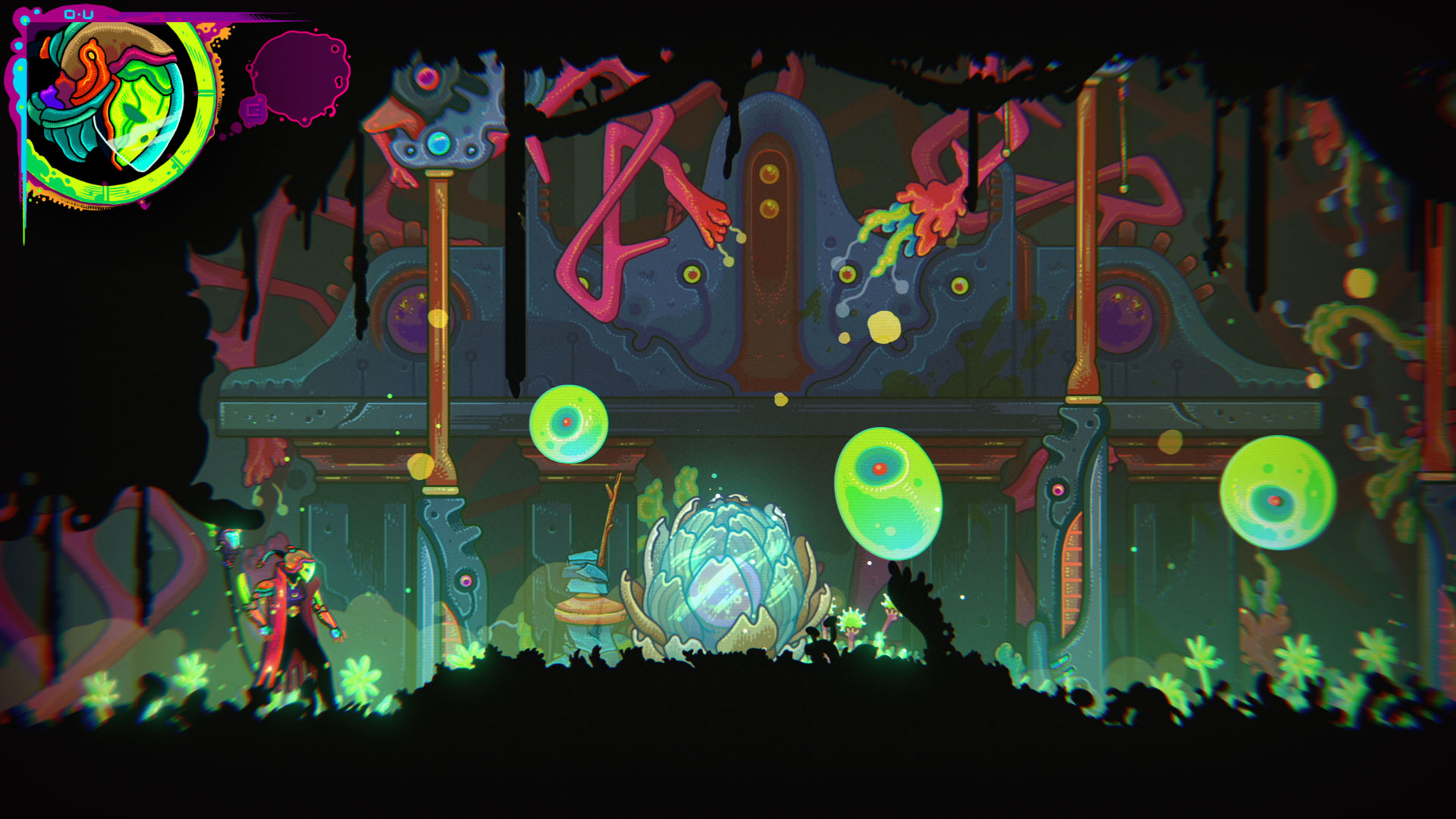
Some of the pathing you’re expected to take can be a tad obtuse if you assume that the game is going to hold your hand throughout. It does guide you at first, tutorialising the combat and Ultros’ basic tenets, but very much leaves you to explore its labyrinthian and winding corridors before too long.
The main loop of Ultros revolves around locating and killing eight stasis-bound shamans who safeguard the continuum and keep the demonic threat bound to its humidicrib. And it’s with each kill that the loop occurs and takes you back to the beginning. Like all good roguelikes, some ideas and mechanics persist, such as gardening and ever-expanding tool sets like your Extractor, creating a great flow of discovery within the world.
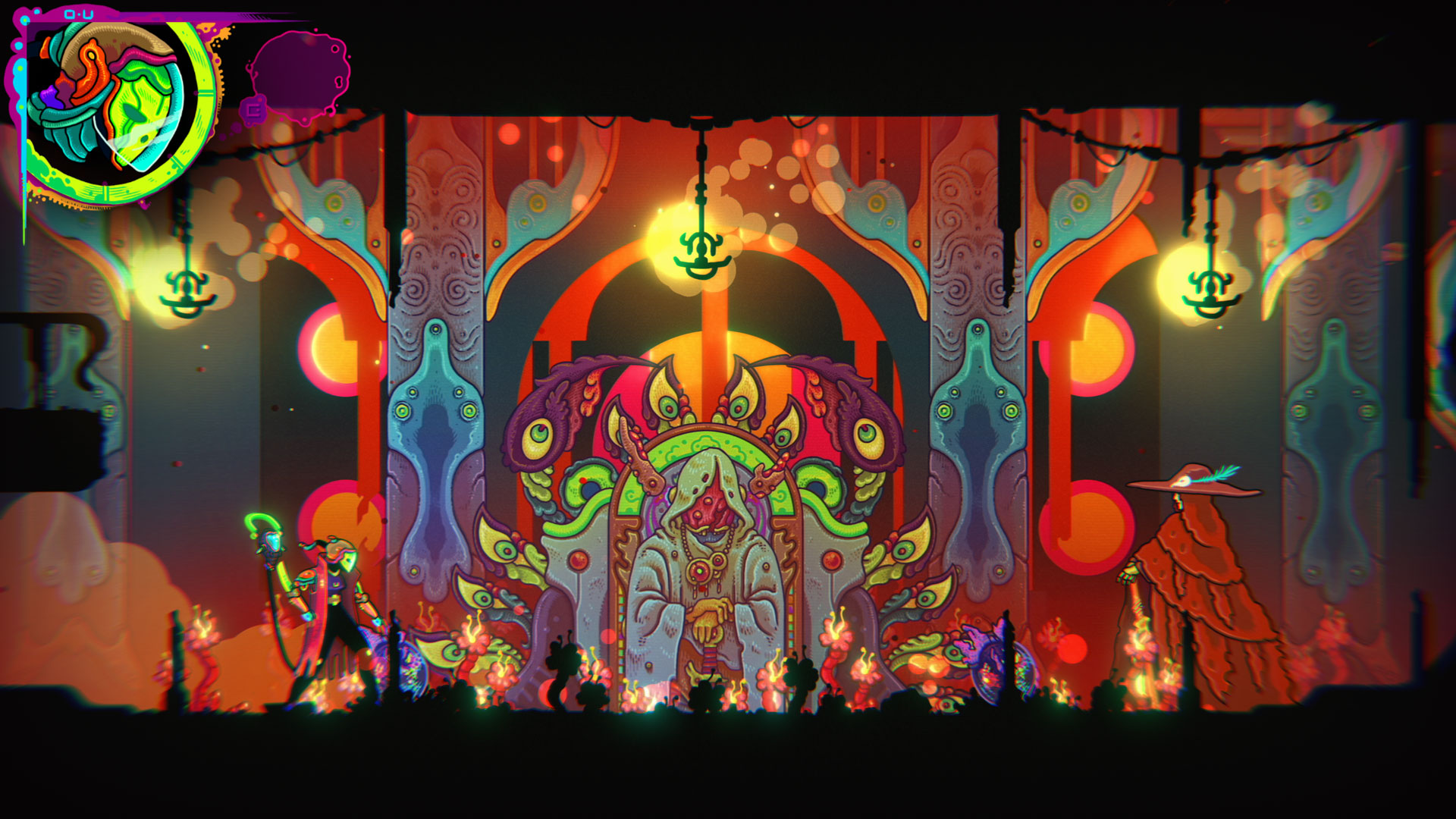
The Extractor is arguably the most important tool in aiding practically all of the game’s mechanics outside of roughhousing. Not only does it include a double-jump by default, it also services the serene gardening aspect of Ultros. Piece by piece, with each shaman slain, it’ll evolve to trim, uproot, and quite literally Frankenstein plants together to birth unique paths through the world. It makes the slow build from novice green thumb to Costa Georgiadis believable and less daunting.
With upgrades being tied to dormant memories, your skill tree is something that, like everything else, resets with each loop. That is until you uncover special cortex locks that fix the memories in place so that they, too, persist across loops. It’s a cool system that, similar to Dead Cells’ semi-titular cells mechanic, doesn’t make defeat in battle too devastating to bounce back from, not to mention Ultros has a generous save system that lets players climb into orbic bunks to either safely mark progress, purchase skills or, much later in the game, travel to other bunks across the Sarcophagus which are connected to the living network.
It’s all elegantly executed and does make Ultros feel less daunting than other games of its ilk, giving players the freedom to explore its intoxicating, kaleidoscopic vistas and drink up the strangest of fiction.
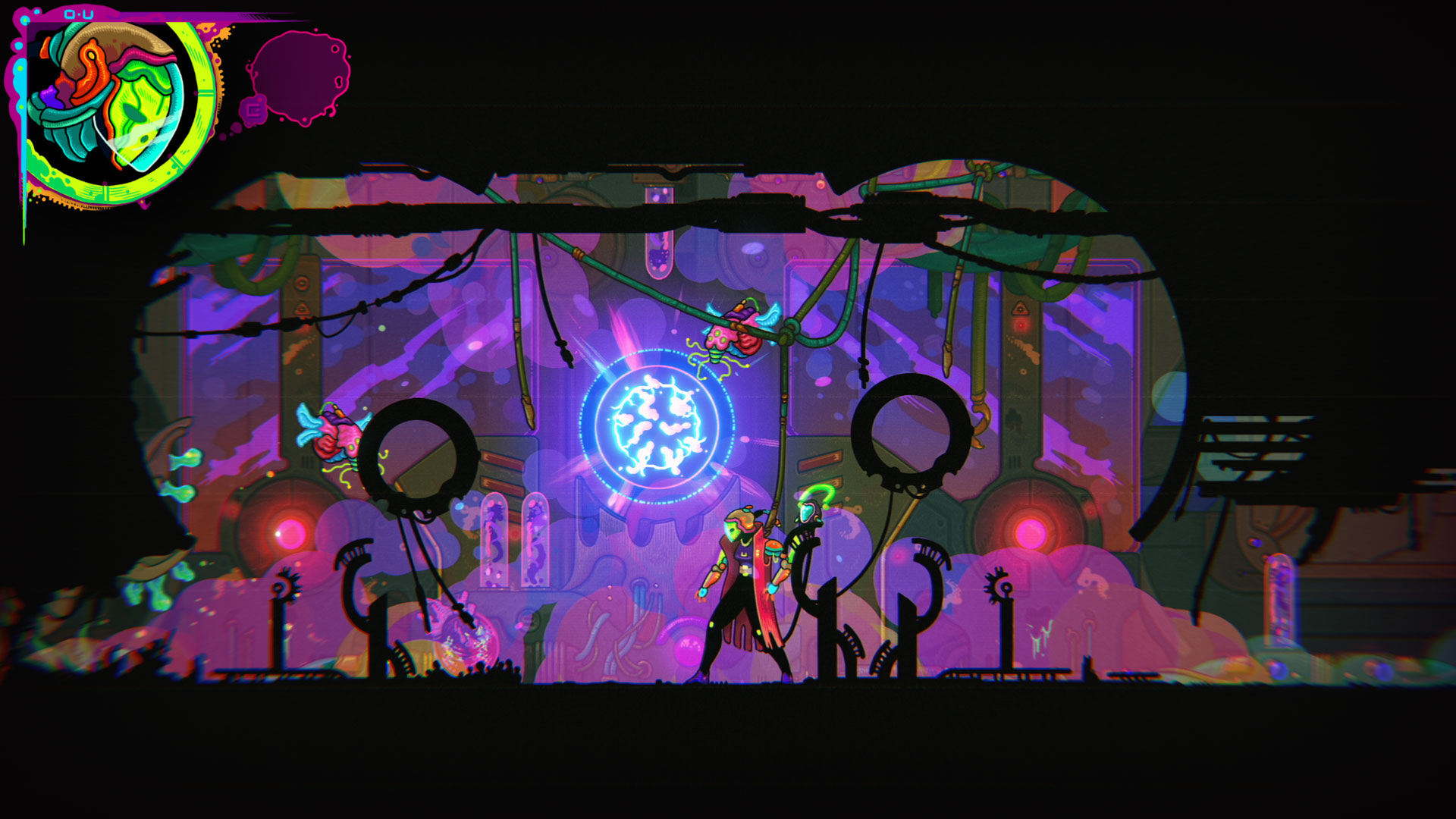
As someone who’s an enormous Hotline Miami enthusiast, it’s hard not to adore El Huervo’s beautiful art direction for this game. It’s distinct, it’s alien, and it’s staggeringly rich in terms of its colour use. The world exists in starburst technicolor and feels full to the brim of many-splendoured psychedelics, it does feel like art that’s worthy of its space on the wall. To capture the vibe of a writhing cosmos, Oscar Rydelius’ ethereal score walks hand-in-hand with the game’s artwork to create a vibe that is the centrepiece of a game with so many strings to its bow already.
For a game of its scale, I was also impressed by the accessibility options Ultros presents. Some soften the backgrounds and dim some of the visual stimuli to make the game’s vibrant visuals more palatable for sensitive players, while you can also tinker with damage sliders to make combat easier if you’re finding it troublesome.
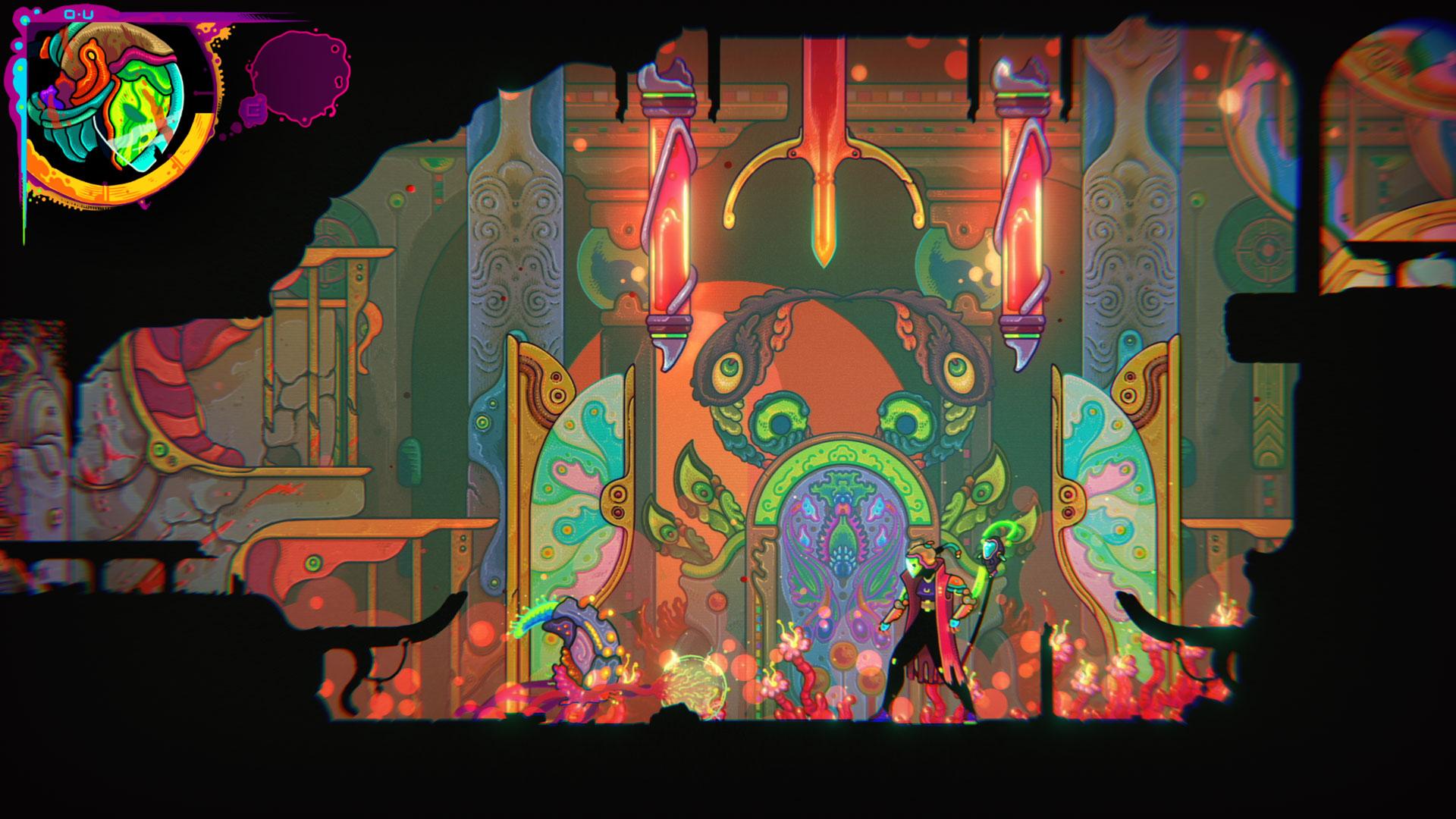
While it’ll ultimately prove fortuitous that the metroidvania has found itself back in the spotlight, Ultros demonstrates that even a few novel ideas can transform the most tried and true concepts into something clever, creatively fertile, and profoundly beautiful.


